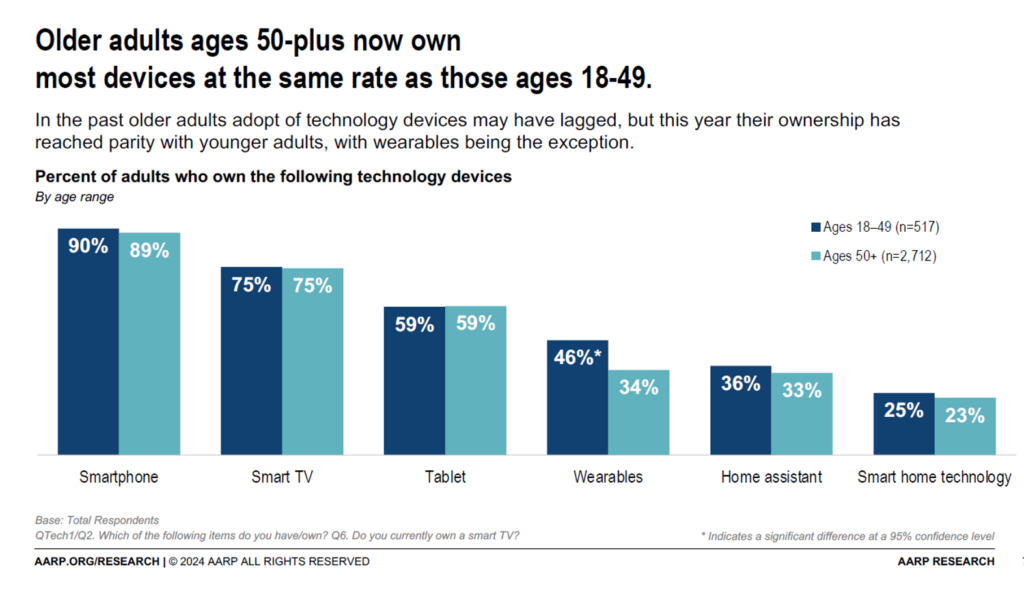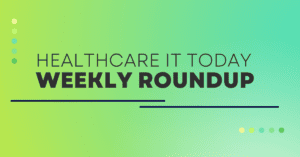Technology Is Playing a Growing Role in Wellness and Healthy Aging – AARP’s Latest Look Into the 50+ Tech Consumer
Most people over 70 years of age recognize technology’s role in supporting peoples’ health, we learn from a new report on 2024 Tech Trends and Adults 50+ from AARP.
But adoption and ongoing use of digital innovations among older people will be tempered without attending to four key barriers that carry equal weight in the minds of 50+ consumers: design and user experience, awareness and interest, cost and acquisition, and trust and privacy concerns. [Spoiler alert: in the Hot Points, below, I add a fifth consideration: health equity + dignity].
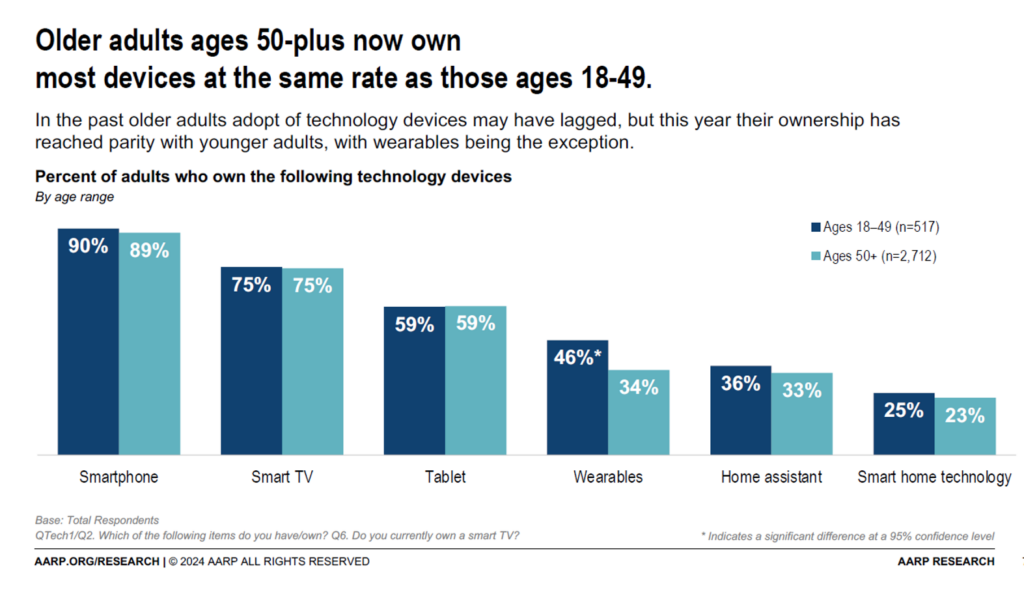
To gauge older Americans’ views on technology, privacy and trust, AARP conducted an online survey among 3,229 U.S. adults ages 18 and over in September and October 2023.
Entering 2024, there appears to be less a digital divide in the U.S. for some technologies owned and regularly used by people 50+ — notably, smartphones, smart TVs, tablets, and home assistants, where roughly the same percentages of people 50+ own compared with people between 18 and 49 years of age.
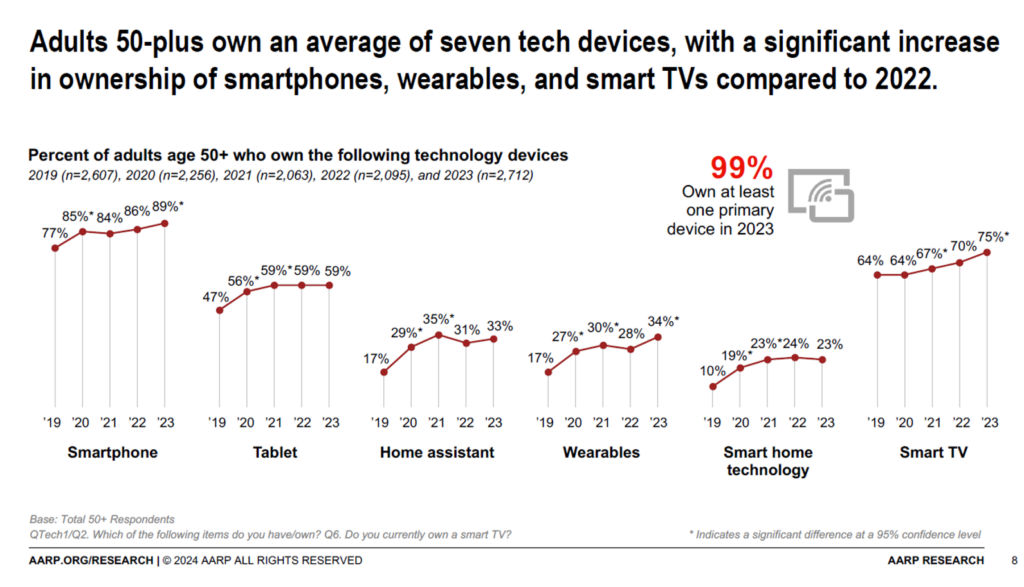
People 50 and over own seven tech devices, on average: smartphones among 9 in 10 older people, smart TVs for 8 in 10 of the 50+ population, tablets (such as iPads) for 6 in 10, and one in three older Americans owning home assistants (“Good morning, Alexa”) and some form of wearable technology (such as a smartwatch or activity tracker like Fitbit).
Smart home technology has plateaued, for now, at around 1 in 4 U.S. people 50+ owning a device in the category. These include devices for security (1 in 3 currently using), extenders (for Wi-Fi signals), lighting, appliances, and utilities (say, for energy or water usage).
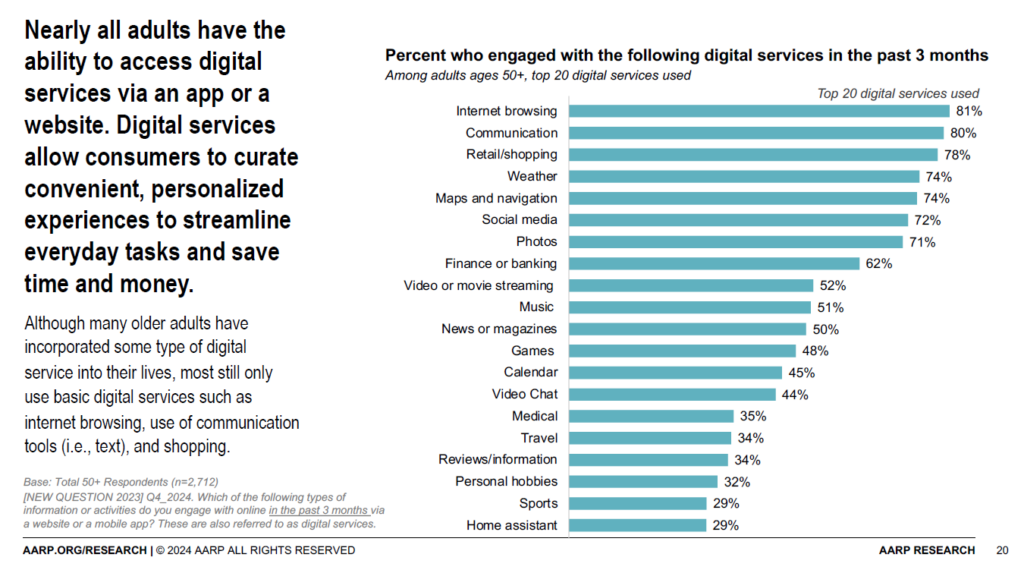
Beyond devices, older adults also use digital services via apps and websites. AARP found that the most popular digital services used in the past three months were browsing the Internet, communications, retail shopping, checking the weather, accessing maps and navigation (GPS), social media, photos, and banking.
There are important differences in how older people want to access these services whether via app or website: caregiving, educational resources, and medical-related services are more likely to be accessed via a website versus an app, whereas smart home/security, health or fitness tracking, transportation, home, podcasts, and books were more likely to be used via an app. 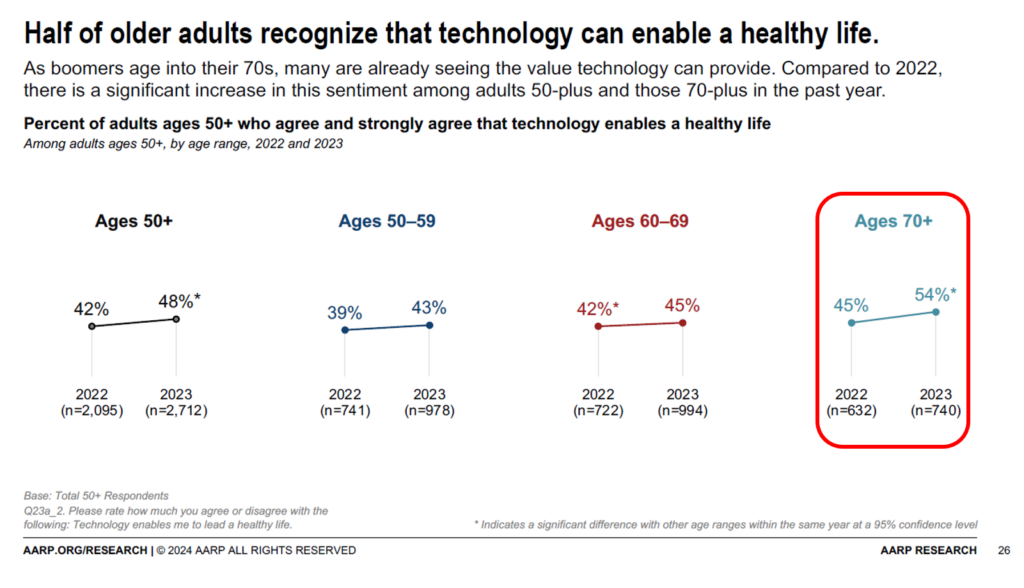
This chart arrays the percent of folks 50+ who agree that technology enables a healthy life — illustrating that those people who are in the oldest age group of 70+ are more likely to recognize technology’s role in supporting healthy living. Specifically, 54% of people 70+ told AARP they agreed tech can enable a healthy life, compared with less than 50% of those 50-59 or 60-69.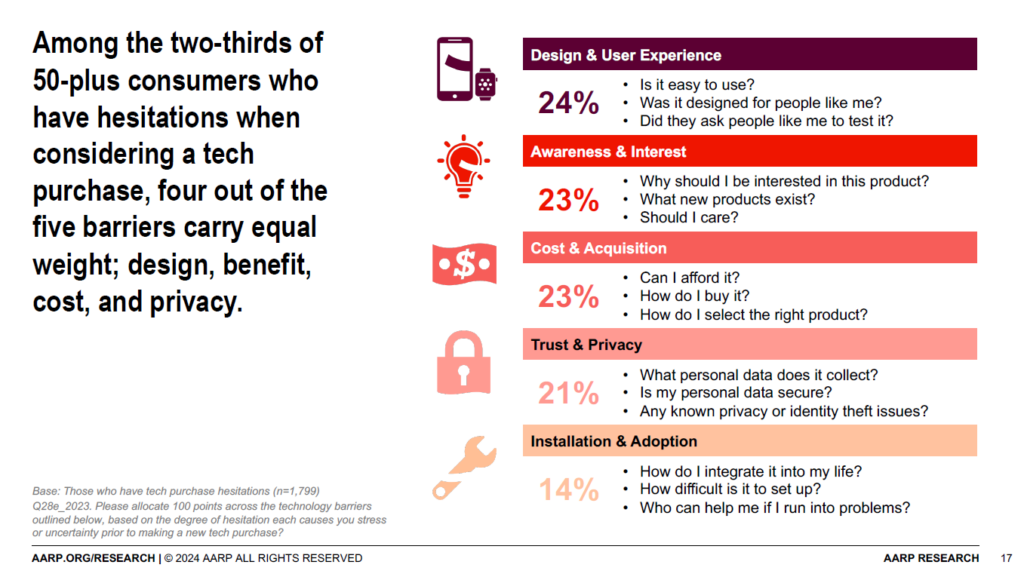
Health Populi’s Hot Points: That encouraging data point of 54% of people aged 70 and over view technology as an enabler of healthy living feels positive — that over-one half of the oldest Americans are optimistic for the prospects of technology innovations supporting their healthy lives in aging well.
However, tech designers and stakeholders in health for older people must be vigilant carrying several thoughts in mind at the same time — and these factors are:
- The design and user experience (UX)
- Awareness and interest (informing potential users of the benefits of the products/services)
- Cost and acquisition (with price transparency, options for purchase, and selection assistance), and,
- Trust and privacy (being clear about the use of the consumers’ personal data, how that information will be secured, etc.).
In addition to these four pillars, purveyors of technologies and innovations for older people should add a fifth consideration into their inclusive design principles: that is equity-by-design.
The report calls out that, “Older adults feel today’s technology is geared toward younger generations, is too complex, or needs more instruction or training — which is not offered.”
RTI has explored ageism in health/care, noting that seniors face health inequities at a rate never before seen.
“Ageism in healthcare is prevalent but can appear subtle. For example, many older Americans face transportation barriers that limit their ability to visit a physician’s office or access other healthcare services. Such barriers lead to delays in care, skipped appointments, and missed medications, contributing to poor management of chronic illness, adverse health outcomes, and increased costs,” RTI observed, calling ageist social determinants of health “a call-to-action for the Baby Boomer population.”
My takeaway here in the Hot Points for the AARP report is RTI’s assertion that dignity is a table stake for delivering high-quality healthcare to seniors.
This isn’t just a recommendation for health care providers, insurance plans, and pharmaceutical and med-tech companies. Embedding dignity-in-design for consumer-facing digital technologies will also be required to bolster older peoples’ self-care and caregiving from home — which AARP points out is where, for some seniors, is the healthiest place to be. 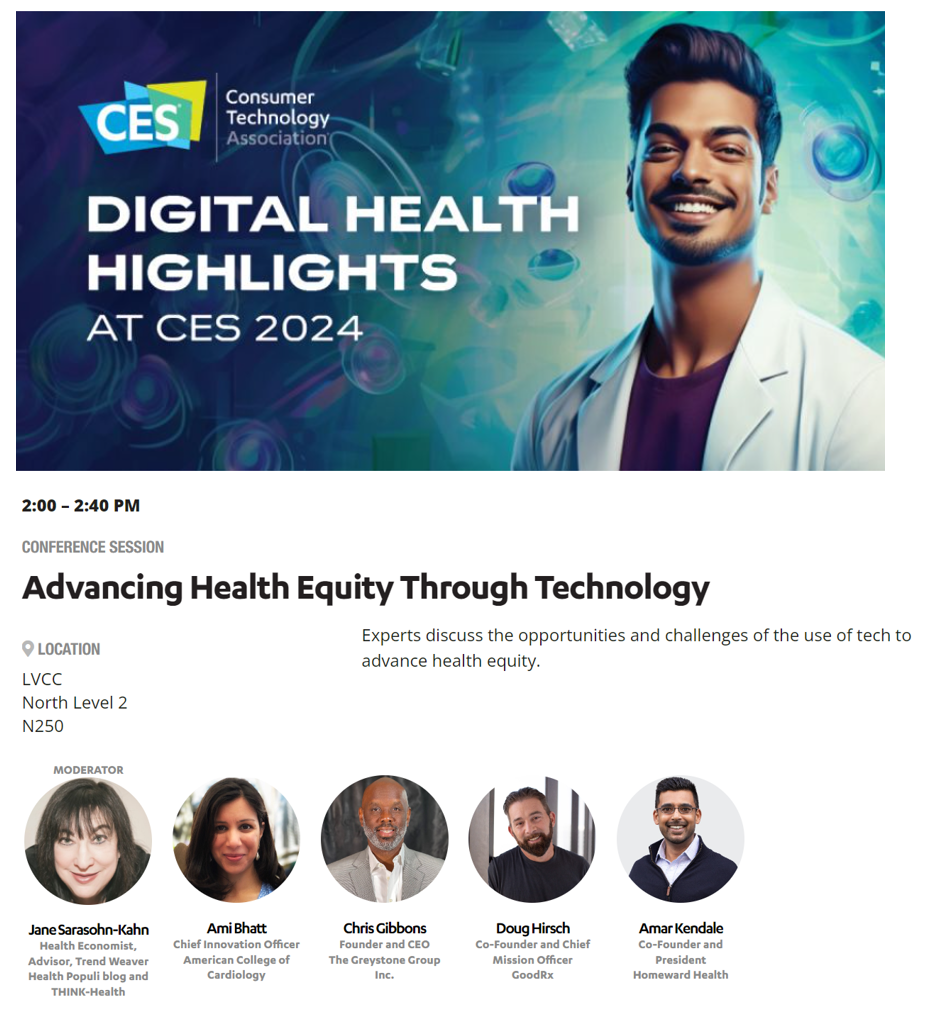
And on the topic of health equity and tech — if you plan to be at #CES2024 in Las Vegas on 11th January 2024 at 2 pm — please come by Room N250 at the Las Vegas Convention Center to be part of our panel discussion on Advancing Health Equity Through Technology. We’d love to see you!
